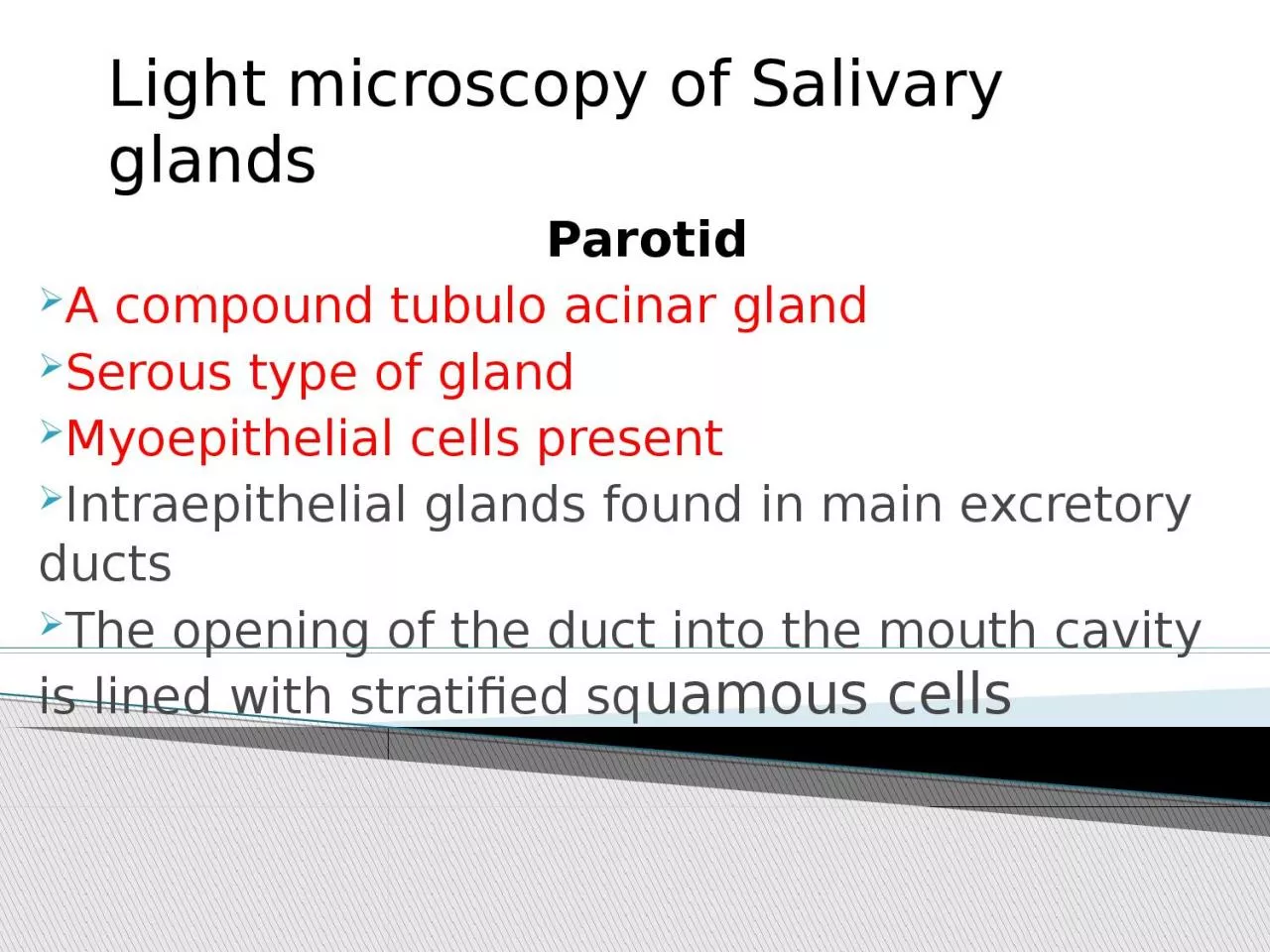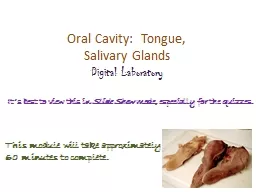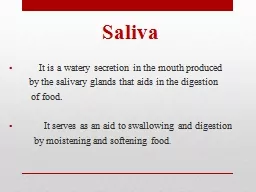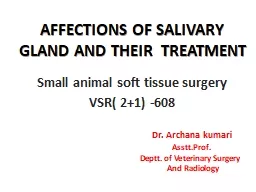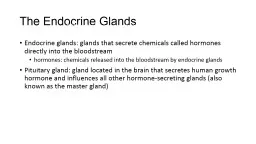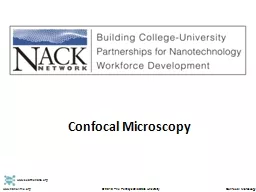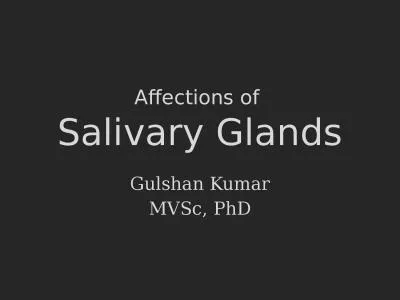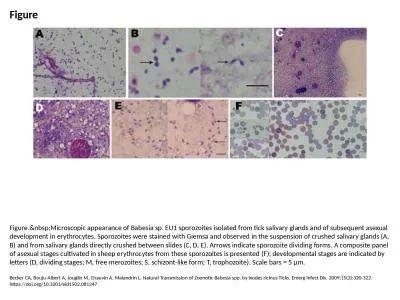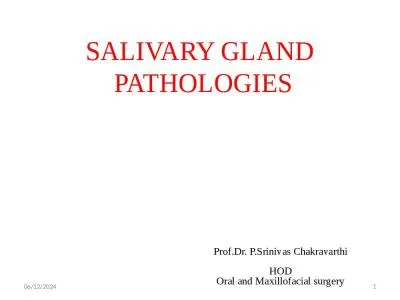PPT-Light microscopy of Salivary glands
Author : ava | Published Date : 2022-06-18
Parotid A compound tubulo acinar gland Serous type of gland Myoepithelial cells present Intraepithelial glands found in main excretory ducts The opening of the
Presentation Embed Code
Download Presentation
Download Presentation The PPT/PDF document "Light microscopy of Salivary glands" is the property of its rightful owner. Permission is granted to download and print the materials on this website for personal, non-commercial use only, and to display it on your personal computer provided you do not modify the materials and that you retain all copyright notices contained in the materials. By downloading content from our website, you accept the terms of this agreement.
Light microscopy of Salivary glands: Transcript
Download Rules Of Document
"Light microscopy of Salivary glands"The content belongs to its owner. You may download and print it for personal use, without modification, and keep all copyright notices. By downloading, you agree to these terms.
Related Documents

